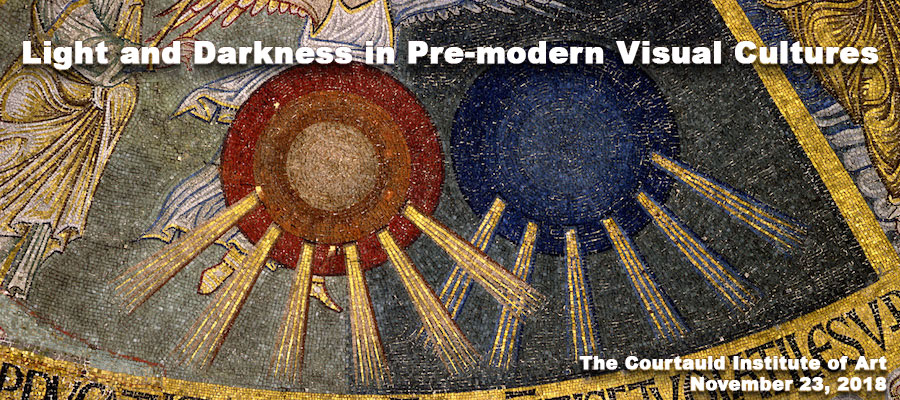Light and Darkness in Pre-modern Visual Cultures, The Courtauld Institute of Art, November 23, 2018
The staged lighting of modern galleries, heritage sites and publications has significantly altered understanding of the roles of light and darkness in the design and reception of pre-modern objects and spaces. Despite sophisticated systems to manage artificial and natural light, pre-modern experiences of the visual were shaped greatly by daily and seasonal rituals and contingencies. In turn, those experiences informed, and were informed by, diverse theories about vision, light and illumination.
This one-day workshop of lightning talks offers participants opportunities to explore their own encounters with issues of light and darkness in pre-modern cultures, and set them within broader scholarly frameworks. How did pre-modern cultures conceptualise, respond to, and manipulate light and darkness and their interactions in urban, domestic and religious settings? How were natural and artificial light managed? What role did they play in the design of individual artworks, architectural spaces, ephemera and rituals, and to what extent did different light levels affect perceptions of objects and spaces? What vocabulary was used to think about light and darkness, and how was this language transformed by the advent of new technologies of illumination? How did pre-modern cultures deploy light/dark, day/night, to cogitate on God and the cosmos, and to visualise them?
Lightning talks should be no more than 5 minutes and 5 slides, and will be ‘curated’ for maximum variety and visual interest. They may relate to any region or culture, and ‘pre-modern’ is here very broadly defined as the period before the adoption of gas or electric lighting. Papers might focus on single objects, rituals or spaces, or on groups thereof. All disciplinary perspectives are welcome, provided they focus predominantly on visual culture.
Papers might consider:
- The language of light and darkness: science, theology, literature and daily life
- Light, darkness and the senses
- Rituals, objects and spaces by night
- Science, technologies and visual culture
- Theologies of light/darkness
- Daily/annual cycles of light and dark
- Street life and the experience of urban spaces and architectures by day and night
- Natural ‘spotlights’ on objects or buildings
- Provision for lighting of various kinds
- The agency of patrons or creators in shaping lighting conditions
- Reconstructions of original lighting conditions
- Restaging of medieval objects in early modern contexts
- Deliberate darkness or blinding light
- Refraction and reflection
- Materiality and immateriality
